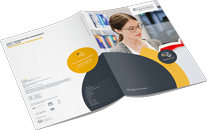Graphic Design and Visual Communication, Bachelor of Arts
Dual studies @ University for Media, Communication and Business
At a Glance
| University | University for Media, Communication and Business, UAS based in Berlin |
|---|---|
| Field of Study | Media SciencesMedia Design |
| Degree | Bachelor of Arts (B.A.) |
| Duration | 8 Semesters |
| ECTS | 180 Credit Points |
| Language of Instruction | German |
| Location | Berlin, Cologne or Frankfurt |
| Enrollment | Winter semester |
| Fees | from 640 € monthly from 26880 € total |
| More Info | View Vendor Profile |

 DE
DE  This provider offers free info materials to download or send. Would you like to be redirected to the provider's website? There you will find much more information about the course.
This provider offers free info materials to download or send. Would you like to be redirected to the provider's website? There you will find much more information about the course.
Advisory Service
Have questions about Academic Programs Graphic Design and Visual Communication? Ask your question here, even anonymously. An employee of the institution University for Media, Communication and Business or the editorial team will answer you.
or post as a guest